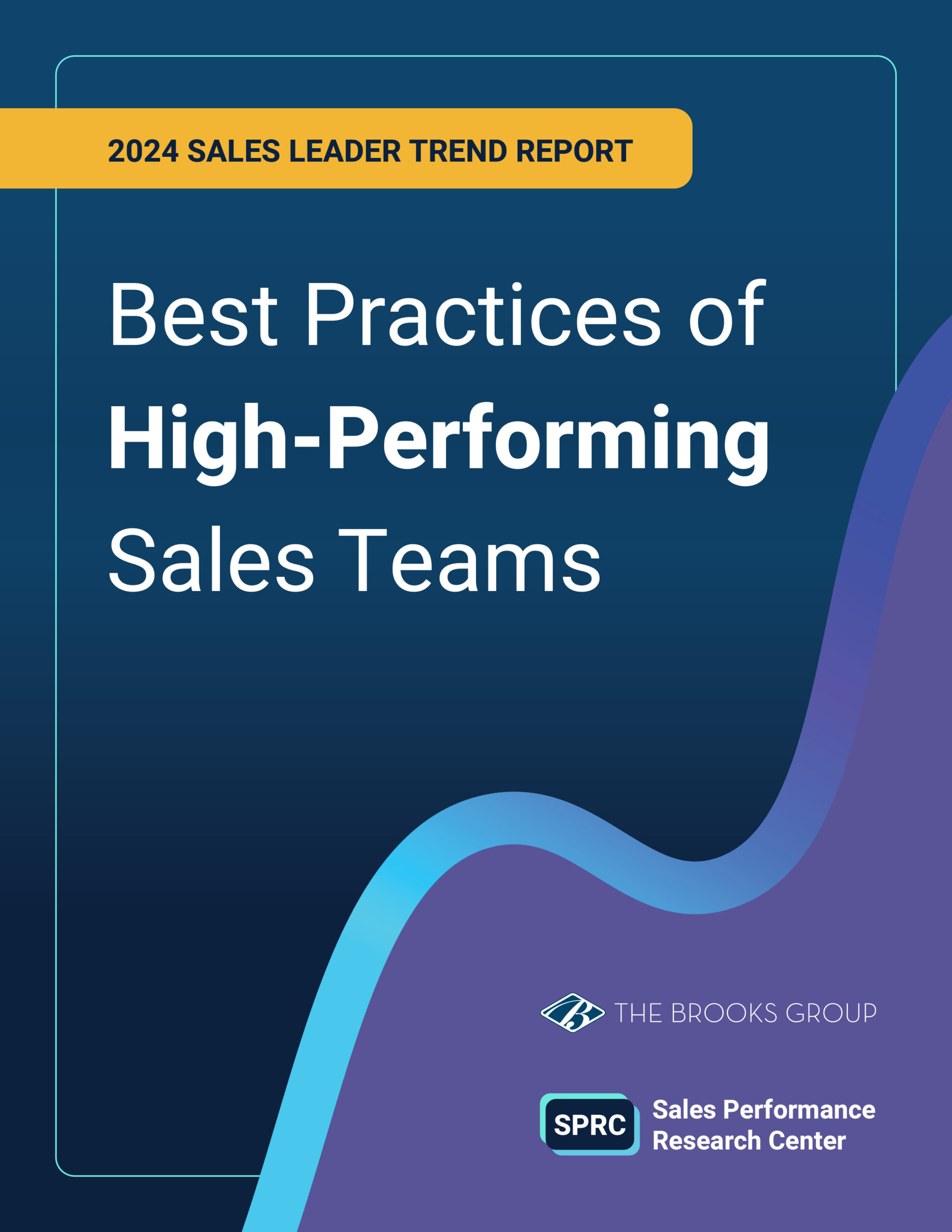Why is selling to the C-suite so critical? As buying processes grow more complex, it’s becoming increasingly important for sales professionals to gain access to senior executives and C-level decision makers.
Gone are the days when you could simply sell to a mid-level manager. Today’s major purchasing decisions often involve cross-functional buying committees that include executives from the C-suite.
Senior leaders control budgets, set strategy, and have the authority to champion major initiatives across the organization. By accessing this level, you position your solution more strategically and reduce the risk of being viewed as just another vendor or commodity supplier.
Learn How to Unleash Revenue Potential with Sales Team Training
What Is a C-Level Decision Maker?
A C-level decision maker is an executive who holds a senior leadership position, typically with a title starting with the letter “C” such as chief executive officer (CEO), chief operating officer (COO), or chief financial officer (CFO).
C-level roles can vary depending on the size and structure of the organization. In smaller or mid-sized companies, the president or founder may be the highest-level decision maker.
Larger organizations may have a more extensive C-suite—a group of senior executives with specialized C-level roles such as chief marketing officer (CMO), chief information officer (CIO), and chief human resources officer (CHRO).
Vice presidents (VPs) or senior vice presidents (SVPs) may also be considered C-level decision makers depending on their level of authority and responsibility.
Senior decision maker titles also vary by industry. Here are a few examples:
- Manufacturing: chief supply chain officer (CSCO), chief quality officer (CQO)
- Construction: chief construction officer (CCO), chief project officer (CPO), chief safety officer (CSO), chief procurement officer (CPO)
- Medical and healthcare: chief medical officer (CMO), chief clinical officer (CCO), chief patient experience officer (CPXO).
The key characteristic of a C-level decision maker is that they have significant influence over strategic decisions, resource allocation, and overall direction of the company or a major division within it. Their approval and buy-in are often crucial for high-level initiatives or major purchases.
The Downside of Failing to Reach the C-Suite
When you fail to prospect and sell to senior-level executives, it can have some major downsides for the deal:
1. You get stuck in the weeds.
If you only engage with lower-level employees, you may get bogged down discussing product features, technical requirements, etc. Without access to senior decision makers, it’s difficult to understand and align to the higher-level business drivers.
2. Your prospect lacks budget authority.
If the people you’re selling to don’t control the full budget, they probably don’t have final authority to make purchasing decisions. This can lead to deals stalling out or getting derailed when it comes time for financial and executive approval.
3. Your solution gets commoditized.
Without relationships at the executive level, you can struggle to position your solution strategically. The buyer sees it as a tactical product vs. something core to achieving their objectives. This makes it easier for competitors to swoop in and underprice.
4. You face internal competition.
There may be competing interests, priorities, and politics within the prospect’s organization. Without a senior executive championing the project, deals can get stalled by internal roadblocks.
5. You can’t expand the account.
Even if an initial deal gets done, not having C-suite relationships makes it very difficult to expand to an enterprise-wide, strategic solution over time. You remain at the mercy of the limited sphere of influence.
Ultimately, when sales professionals bypass senior leaders, it decreases their ability to drive larger, more strategic and transformative deals. The deals tend to get downsized to departmental or localized purchases where pricing and competition become the primary decision factors.
Moral of the story: Connecting early with executive decision makers is critical for sales professionals to maximize deal sizes and successfully navigate complex purchasing processes. Failing to do so can leave significant money on the table.
9 Strategies to Reach the C-Suite
When approaching an executive decision maker for a sales opportunity, a sales professional should adopt a strategic and high-level approach. However, reaching the C-suite is no easy feat. Executives are extremely busy, have demanding schedules, and are often shielded by layers of gatekeepers. To successfully sell at this level, you need to adapt your strategies.
Build credibility.
C-level buyers want to engage with sales professionals who they view as trusted advisors and subject-matter experts. Invest in developing your personal brand; showcase your industry expertise and track record of success.
Map the organization’s priorities and decision makers.
Before trying to access the C-suite, do your homework. Understand the key initiatives, challenges, and priorities for the business and map out who the critical decision makers are for your type of solution.
Quantify business impact.
Executives are interested in measurable results and return on investment (ROI). Provide concrete data, statistics, and projections that demonstrate the potential financial benefits, cost savings, or revenue growth opportunities.
Offer a consultative sales approach.
Executives value strategic partnerships and consultative relationships. Position yourself as a trusted advisor who can provide insights, expertise, and solutions tailored to the company’s unique needs.
Get introduced through existing executive relationships.
The best way in is a warm introduction from someone the executive knows and trusts. Identify contacts in your network who may be able to make introductions and facilitate meetings.
Use insights and new ideas as currency.
Busy executives will make time if you can provide fresh perspectives and valuable insights related to their strategic priorities. Lead with new ideas and approaches—not just product pitches.
Focus on strategic value.
When engaging with the C-suite, use a value-based approach. Discuss high-level impacts such as competitive advantage, strategic risks/opportunities, financial performance, and shareholder value, not just product features and tactical details.
Bring cross-functional expertise.
C-level leaders care about solutions that deliver enterprise-wide benefits. Have experts on your team who can speak to different functional areas like finance, operations, marketing, etc.
Follow up and persist.
Purchase decisions often involve multiple stakeholders and a longer sales cycle. Follow up persistently but professionally, providing additional value and insights at each touchpoint.
The 3 Tiers of Decision Makers
Decisions are usually made at three levels in an organization: strategic, operational, and tactical. Strategic decisions are made at the executive level. Operational decisions are made by mid-level management. Tactical or logistical decisions are made daily by frontline employees.
Here is a breakdown of the three levels of buyers your sales professionals are likely to face:
- Senior-level executives = strategic buyers. Their main concern: “How will it benefit our long-term business strategy?”
- Middle management = operational buyers. Their main concern: “How will we put your product or service into place?”
- Personnel = tactical/logistical buyers. Their main concern: “How much more work will your product or service require?”
Can Your Team Sell to Executive Decision Makers?
To assess your team’s ability to sell to a senior-level executive, ask yourself these questions:
- Where do your sales professionals currently enter accounts?
- Does the entry point match level of expenditure, commitment, and long term-value?
- Are they comfortable interfacing with senior executives?
- Are they prospecting at the right level?
- Are they getting in front of the right people?
- Do they have the capacity to build relationships with people at all levels of an organization?
The answers will tell you if and where you need to focus C-level selling training.
Why Salespeople Don’t Reach the Senior Level
Far too many sales professionals tend to enter an account at a level that is comfortable, easy, and expedient. Sales professionals who enter an account too low usually start selling to a person without the necessary authority to make a purchase.
They tend to do this for one or more of the following reasons:
Traditional Approach
The sales professional was trained to enter an account at a low level and/or that’s the way it has always been done. You might hear something like, “I always go see the person at the front desk and they send me to the right person.” This is the old “if it ain’t broke, don’t fix it” routine.
The problem with doing it the way it’s always been done is you don’t know how many opportunities are being left on the table or squandered. Your sales professionals may not know how good things could be if they were talking to people with more authority.
Low Self-Image
Their self-image makes them feel inferior to key decision makers and they aren’t comfortable “rubbing elbows” with people at the top of the organizational chart.
This self-image issue is related to feeling, “We’re not worthy!” That may seem like a tongue-in-cheek point, but your sales professionals’ self-image can make or break your bottom line.
Inadequate Qualification
They don’t qualify prospects well enough and settle for talking to anybody who will listen. In most cases, people who will listen to a sales professional for the sake of listening don’t have much going on and are happy to spend hours burning the clock on the company dime.
Improper Positioning
They’re not positioned well in the marketplace. The most successful sales professionals are those who develop a celebrity-like status in the industry. Senior-level decision makers will listen to those they believe have something important to say.
Personal positioning is key to your sales team’s success. In many cases, sales professionals are driven to set appointments by quota-crazy sales managers who demand they make a certain number of calls or presentations per week.
The result? Lots of sales professionals calling on too many of the wrong people.
C-Level Selling: Recommendations for Sales Leaders
Part of your job as a sales leader is to help your sales professionals sell smarter. That means getting your team to understand and practice senior-level decision maker selling.
Make sure you train, coach, and reinforce sales skills to achieve these goals:
- Your sales professionals can qualify prospects at the highest levels within an account.
- Your sales professionals understand the importance of being “handed down.”
- Your sales professionals create partnerships with executive-level customers.
- Your sales professionals work with executive-level customers to provide a wide range of solutions and use cases.
- Your sales professionals develop relationships with a wide range of people having varying levels of authority and influence.
How to Determine the Best Level for Your Product or Service
You can help your sales team penetrate accounts at a higher level by identifying how your product or service fits into your customer’s overall direction and their motive for buying from you.
- Is your product or service strategic and essential to the overall business strategy of your prospect?
- Is your product or service an operational component that relates to day-to-day activities of your prospect?
- How much impact does your product or service have on your customers’ profitability, revenue, or cash flow?
- Would you consider your product an “A” priority purchase (jet fuel for an airline), a “B” priority purchase (foam cushioning for airplane seats), or a “C” priority purchase (soft drinks for passengers).
- How will your product or service impact the long-term direction of your customer’s business?
- Is your product or service seen as a commodity?
- How exclusive is your product or service?
All of these issues play an essential role in determining where your sales professionals should first attempt to enter an account.
If you are selling something that is not exclusive and is purely operational in application, your sales professionals are probably calling on someone at that level. However, what happens when your competitor gets the attention of someone with far more clout, directional strategy, and authority within your account?
No matter what you sell, train your sales professionals to enter at as high a level as possible. This will position your product or service more strategically. It doesn’t matter if you’re selling cleaning services, computers, or cars.
When sales professionals enter an account at lower levels, they run the risk of becoming a “supplier”—someone who provides commodities (often only temporarily) until someone else offers a lower price.
Selling with Value to Senior Decision Makers
Entering an account at the highest level will align your product or service with the long-term strategy of the buyer. Forging a consultative partnership with key decision makers means you’re less vulnerable to price competition. Your relationship is more likely to weather future changes within that organization.
Although it is initially difficult to enter accounts at high levels, it makes both selling and servicing the account much easier. After completing sales training, your team will be more equipped to target key decision makers. You should see increased penetration in existing accounts, higher rates of client retention, and less price resistance.
While challenging, developing the capabilities to sell to senior executives is crucial for driving bigger, more strategic deals. By successfully navigating to the C-suite, you escape being commoditized and can forge deeper partnerships that create long-term value for your customers.
Learn More
Find out how our sales training and development programs can upskill your team to sell to the C-suite.
2024 Sales Leader Trend Report
Best Practices of High-Performing Sales Teams
We surveyed B2B sales leaders across multiple industries at organizations to discover the answer.
In this research report, Best Practices of High-Performing Sales Teams, we share what the best sales teams do differently.





